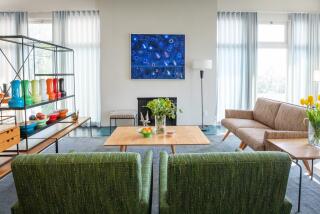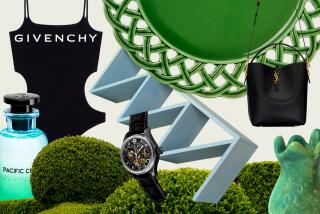ACCENTS : Prisms of Chandelier Add Sparkle to Wood, Steel Trim
- Share via
One of the strongest decorating trends these days is to create an eclectic setting, a mix of two or more styles such as traditional and modern.
Such is the idea behind new lighting and accessories that mix the chandelier’s glass prism with steel and wood. They represent a blending of another sort, as well: designer Andree Putman, a doyenne of modernism, and Baccarat, maker of “crystal for kings.”
Putman, the French force behind the interiors of the Air France Concorde and two trendy New York hotels, the Morgan and Paramount, would seem an odd choice for Baccarat, which started as a window and mirror company in 1764 with the blessing of Louis XV. It began working exclusively in crystal in 1817 for commoners and royalty.
“The company’s association with Andree Putman is part of an initiative to reinvigorate the brand and its image,” said Baccarat’s chairman, Anne-Claire Taittinger-Bonnemaison.
The element common to all the pieces is the use of crystal prisms that catch the light as they sway in any chance breeze. The French word for a dangling decoration is “pampille,” and the designs are known as the Pampilles Collection. Prices range from $250 to $5,500.
Gail Green, a New York interior designer, put a candelabrum, mirror and picture frame in a library at the Southampton Showcase House on Long Island.
“The idea of prisms is fabulous because they cast rainbows all around the room . . . depending on when and where the light comes through the windows,” she said.
Known today for its crystal stemware, tumblers and decanters, Baccarat was once equally famous for chandeliers, which the company began making in 1840.
Before Putman created the Pampilles Collection, she prowled Baccarat’s Paris warehouse and its manufacturing plant in the Lorraine region of France. She decided that each item should include one or more prisms, used like tassels. The designer enjoys the contrast of opulent crystal accents with unornamented shapes in steel and wood.
“There has been a lot of arrogance in design lately,” Putman said. “These designs are the opposite of spectacular.”






